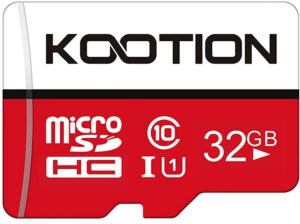Introduction
The evolution of monetary transactions, especially in the realm of business, has taken a significant leap forward in recent years, largely due to the technological advancements and innovations introduced by payment vendors. These entities have redefined the landscape of business transactions, facilitating a seamless flow of funds between buyers and sellers. Payment vendors have introduced and popularized models such as Net 30 and Buy Now, Pay Later (BNPL), among others, which have not only simplified but also diversified the options available for modern commerce. As these methods gain traction, it becomes crucial to understand their mechanisms, benefits, and the role of payment vendors in driving their adoption and implementation.
Payment vendors serve as the technological backbone, enabling the secure and efficient transfer of funds across a myriad of transaction types. These range from conventional credit and debit card payments to more advanced digital wallets and even emerging methods involving QR codes and cryptocurrencies. The process, which appears instantaneous to the user, involves a detailed sequence of encryption, transmission, network communication, authorization, and settlement, all orchestrated by payment vendors. They ensure that every transaction adheres to high standards of security and meets the rigorous demands of modern commerce.
The Expanding Universe of Payment Methods
The spectrum of payment methods that vendors can process is wide and includes:
– Credit Cards: The bedrock of electronic payments, supported by major networks like Visa and Mastercard.
– Debit Cards: Offering immediate payments by linking directly to the user’s bank account.
– ACH Transfers: Facilitates bank-to-bank transfers, suitable for large transactions or recurring payments.
– Digital Wallets: Provides a software-based solution for payments, enhancing convenience and security.
– Emerging Methods: Includes innovative options like QR code payments and cryptocurrency transactions.
The Behind-the-Scenes Process
Understanding how payment vendors operate gives insight into the complexity and efficiency of modern transactions:
1. Initiation: The transaction begins with the customer choosing a payment method and providing their details.
2. Encryption and Transmission: Information is encrypted and securely transmitted to the payment vendor.
3. Network Communication: The vendor routes the information through various networks, ensuring it reaches the appropriate financial institutions.
4. Authorization: The issuing bank reviews the transaction, performing necessary checks before approval.
5. Settlement: Upon approval, funds are transferred, a process that may take a few business days.
Beyond Transactions: Diverse Roles of Payment Vendors
Today, payment vendors offer a plethora of services beyond mere transaction processing. These range from security enhancements, such as PCI compliance and advanced fraud detection, to global commerce facilitation with multi-currency support and data analytics for behavior insights. They also manage subscription services, offering tools for recurring billing and customer subscription management.
The intricacy of modern transactions and the pivotal role of payment vendors in facilitating these processes underscore the transformative impact these entities have on commerce. As we delve deeper into the specifics of Net 30 agreements, the burgeoning BNPL sector, and how these models fit within the broader payment ecosystem, the ingenuity and indispensable nature of payment vendors become even more apparent.
Understanding Payment Vendors: The Engine behind Modern Transactions

The Role and Importance of Payment Vendors
Payment vendors, acting as the crucial intermediaries in financial transactions, have fundamentally transformed how we engage in commerce. By facilitating the secure and swift movement of funds, they serve as the operational backbone of today’s global marketplace. These entities, also known as payment processors, take on the role of a financial courier, ensuring that money changes hands accurately and securely. Their work supports a variety of transaction methods, from traditional credit card payments to innovative digital wallets, thereby accommodating a wide spectrum of consumer preferences and business needs.
The Diverse Payment Methods Supported
The ecosystem of payment vendors supports an array of payment methods, catering to the diverse needs of modern consumers and businesses. This inclusivity allows for a more accessible and flexible commerce environment. Key payment approaches include:
– Credit Cards: These remain a foundational component of electronic payments, with widespread acceptance of major networks such as Visa and Mastercard.
– Debit Cards: These provide a direct, real-time payment method by drawing funds from a user’s bank account.
– ACH Transfers: Ideal for large transactions or recurring payments, these electronic bank-to-bank transfers offer a reliable alternative.
– Digital Wallets: Representing the cutting edge of payment technology, services like Apple Pay and Google Pay provide users with unparalleled convenience and security.
– Emerging Methods: Payment vendors are continually adapting to include novel approaches like QR codes and even cryptocurrencies, reflecting an openness to technological evolution.
The Operational Complexities of Payment Vendors Unveiled
The Transaction Cycle: From Initiation to Settlement
Behind the seamless user experiences lies a complex transaction cycle managed by payment vendors. This cycle begins at initiation, where a customer opts for their preferred payment method and submits their financial details. The sensitive data is then encrypted and transmitted securely to the payment vendor, which serves as a ‘traffic controller’, steering the data through the necessary networks – be it card networks or banking systems. Upon reaching the issuing bank, the transaction undergoes a rigorous authorization process involving fraud checks and fund verification, culminating in approval or rejection. If approved, the payment vendor facilitates the fund transfer, marking the start of the settlement process, which can span several business days due to banking protocols.
Security Measures: Guarding Against Fraud
In an ever-evolving digital landscape, payment vendors prioritize robust security measures to protect against fraud. Adherence to PCI Compliance ensures that stringent security standards are met, while advanced technologies like tokenization obscure sensitive data, reducing the risk of breaches. Moreover, AI-powered fraud detection systems aid in identifying and mitigating suspicious activities in real-time, showcasing a proactive approach to safeguarding financial transactions.
Beyond Transactions: The Expanding Services of Payment Vendors
Today’s payment vendors transcend their traditional roles by offering a broad spectrum of value-added services. From empowering merchants with multi-currency support for global reach to providing rich transaction analytics for enhanced decision-making, the scope of services is vast. Additionally, subscription management features cater to the burgeoning market for recurring billing models. In the realm of Net 30 arrangements and BNPL agreements, payment vendors facilitate smoother, more efficient transactions by offering diverse payment options and integrating with accounting software for automated invoice management. This expanding array of services not only enhances operational efficiency but also enriches the overall transaction ecosystem, affirming the pivotal role of payment vendors in modern commerce.
The Persistent Appeal of Net 30 Agreements in Business Transactions

Net 30 agreements, a longstanding tradition in business credit, have not waned in importance with the advancement of modern transaction methods. Instead, they continue to offer significant benefits to businesses, notably those that are growing or have tight cash flows. This section explores the enduring allure of Net 30 agreements and their relevance in today’s digital economy.
The Advantages and Mechanics of Net 30
Net 30 agreements function as a vital credit extension, giving businesses up to 30 days to pay for goods or services without incurring interest. This scheme benefits companies in multiple ways:
1. Improved Cash Flow Management: Businesses can preserve their cash on hand for other operational needs, providing them with the flexibility to manage unexpected expenses or invest in growth opportunities.
2. Enhanced Business Relationships: Offering or being offered Net 30 terms signifies trust between vendor and client, potentially leading to more favorable business deals and long-term partnerships.
3. Opportunity to Build Business Credit: Especially for newer businesses, timely payments under Net 30 terms can positively impact credit history, facilitating access to better credit conditions or loans in the future.
The operation of Net 30 is straightforward: a vendor invoices the buyer with the note that the payment is due in 30 days. During this period, the buyer can manage funds accordingly without having to deplete financial reserves immediately upon receipt of goods or services.
Spotlight on The CEO Creative: A Net 30 Vendor Example
One exemplar of a modern business leveraging Net 30 to its advantage is The CEO Creative. This company distinguishes itself by blending a range of essential services with generous payment terms, embodying how flexible credit terms can underpin entrepreneurial success.
The CEO Creative offers:
– A Broad Spectrum of Services: From branding and design to printing and office supplies, this vendor serves as a one-stop-shop for businesses to maintain their operational tempo without financial constraint.
– Access and Inclusivity: Catering particularly to startups and growing companies, The CEO Creative’s Net 30 terms provide a much-needed buffer, allowing these businesses to establish or expand their operations without immediate financial pressure.
What makes The CEO Creative especially valuable is this dual role as both a resource provider and a financial facilitator. By offering a wide range of services on favorable payment terms, they not only support business logistics and branding needs but also contribute to healthier cash flow management and credit establishment for their clientele.
The Revolutionary Impact of Buy Now, Pay Later (BNPL) Schemes
Buy Now, Pay Later (BNPL) schemes have emerged as a groundbreaking shift in how consumers approach large purchases. Offering a more manageable, installment-based payment method, BNPL is reshaping consumer financing and retail transactions at a rapid pace.
The Growing Popularity and Mechanics of BNPL
BNPL’s appeal primarily stems from its simplicity and adaptability to consumer needs, offering a middle ground between outright purchase and traditional credit lines. Here’s why it’s become so popular:
1. Flexibility and Accessibility: BNPL plans, often interest-free, enable consumers to spread the cost of a purchase over several payments, making it easier to afford bigger ticket items.
2. Instant Gratification, Delayed Payment: This model allows consumers immediate access to goods or services, with the financial responsibility spread out over time.
3. Enhanced Consumer Experience: Offering BNPL at checkout can deter cart abandonment and bolster customer retention, as demonstrated by improved conversion rates and stronger buyer loyalty observed by merchants.
At its core, BNPL works by splitting the total cost of a purchase into several smaller payments, due over predetermined intervals. This facilitation typically requires consumers to undergo a quick credit check at the point of purchase, but the overall process is designed to be seamless and unobtrusive.
The Synergistic Role of Payment Vendors in BNPL Operations
Payment vendors are indispensable to the BNPL ecosystem. Their technology and infrastructure enable smooth, secure transaction flows between consumers, merchants, and BNPL providers. The partnership between these entities ensures:
1. Efficient Transaction Processing: Payment vendors process each installment, utilizing the same security measures as traditional payment methods to protect consumer data.
2. Seamless Integration: Payment vendors facilitate the integration of BNPL options into existing payment systems, allowing consumers a frictionless checkout experience.
3. Risk Assessment Tools: With advanced fraud detection capabilities, payment vendors assist BNPL services in vetting consumer eligibility, thereby mitigating financial risk.
As digital transaction methods continue to evolve, the synergy between payment vendors and BNPL services will likely deepen, fostering further innovation in consumer finance and retail transaction modalities. This cooperative dynamic not only enhances the checkout experience but also plays a critical role in the broader financial ecosystem, making modern commerce more inclusive and accessible.
Peering into the Future: Innovations and Implications

The landscape of the payment industry is on the brink of significant transformation, driven by the relentless pace of technological advancements and changing consumer expectations. As we delve deeper into the future of payment vendors, two emerging trends stand out: embedded financing and vendor financing. These innovations are not only reshaping how transactions are conducted but also blurring traditional boundaries within the financial services sector. Furthermore, the role of payment vendors in driving commerce and facilitating financial inclusion has never been more pivotal. By examining these developments, we can begin to appreciate the profound implications they hold for businesses and consumers alike.
Embedded Financing and Vendor Financing: Blurring Lines
Integrated financing and vendor financing represent a new frontier in the world of payments, where the lines between processing payments and extending credit are increasingly becoming indistinct. Embedded financing refers to the seamless integration of financial services within the purchasing process. This can include offering Net 30-like terms or Buy Now, Pay Later (BNPL) options directly at the point of sale, courtesy of the payment vendor’s sophisticated platforms. On the other hand, vendor financing emerges through collaborations between payment vendors and traditional lending institutions. These partnerships are creating innovative financing solutions that provide businesses with quick access to capital, featuring shorter approval times and more flexible repayment terms compared to conventional loans.
These developments are signaling a shift towards more holistic financial solutions, enabling vendors to offer a broader spectrum of services. Such progression not only enhances the purchasing experience for consumers but also facilitates better cash flow management for businesses. By effectively becoming lenders, payment vendors are assuming a more central role in the financial ecosystem, offering support that goes beyond mere transaction processing.
The Vital Role of Payment Vendors in Driving Commerce and Financial Inclusion
In the digital era, payment vendors are the unsung heroes of commerce, facilitating seamless transactions that are secure, efficient, and inclusive. Their contribution extends across several dimensions:
– Democratizing Commerce: Through their global reach and support for a multitude of payment methods, including multi-currency transactions and cross-border payments, payment vendors make it possible for businesses of all sizes to access international markets. This democratization of commerce is empowering smaller players to compete on a global stage, thereby spurring innovation and diversity in the marketplace.
– Personalizing Financial Experiences: Leveraging data analytics, payment vendors offer businesses insights into customer behavior and spending patterns. This invaluable information enables companies to tailor their offerings, creating highly personalized shopping experiences which can lead to increased customer loyalty and higher sales.
– Driving Financial Inclusion: In regions with limited access to traditional banking services, payment vendors are pioneering financial inclusion by partnering with mobile providers. They’re introducing mobile payments and digital wallet solutions that bring basic financial services to the unbanked or underbanked, facilitating their integration into the wider economy.
– Reshaping the Lending Landscape: As the boundaries between payment processing and financial services continue to blur, payment vendors are innovating new lending solutions that promise to transform how businesses access funding. By offering more streamlined, embedded financing options, they’re potentially simplifying the credit market, making capital more accessible and flexible.
As we look towards the future, payment vendors are positioned at the heart of economic activity, driving not just the evolution of payment methods but also creating pathways toward greater financial inclusion and economic empowerment. Their role in building bridges between traditional finance, technological innovation, and consumer needs cannot be overstated, underscoring their importance in the fabric of modern commerce.
Conclusion
In the dynamic landscape of modern business transactions, payment vendors play a crucial role, seamlessly facilitating the exchange of money for goods and services. They are the invisible threads weaving through the fabric of commerce, enabling not just the conventional transactions but also pioneering innovative payment methods like Net 30 and Buy Now, Pay Later (BNPL). Their ability to evolve and adapt has not only revolutionized the way businesses operate but has also reshaped consumer behavior, offering unprecedented flexibility and convenience.
Behind every swipe, tap, or click, payment vendors ensure secure, efficient, and reliable transactions. By democratizing commerce, they have opened up global marketplaces to businesses of all sizes, fostering growth and competition. Their impact extends beyond the transactional, as they leverage vast data to personalize financial experiences, creating tailored offers that enhance customer satisfaction and loyalty.
However, with great power comes great responsibility. The expanding digital payments arena is accompanied by heightened cybersecurity risks. Payment vendors must remain vigilant, continuously advancing their security protocols to protect against fraud and breaches. Additionally, as the BNPL model gains traction, promoting responsible spending and consumer education will be paramount to prevent financial overextension.
Payment vendors have indeed unlocked a new world of possibilities for modern business transactions. Their ongoing innovation is not just facilitating commerce but is also enriching it, offering a glimpse into a future where transactions are not just transactions but experiences – secure, efficient, and tailored to individual needs. As we look forward, the continued advancement and responsible management of these systems will be key to unlocking even greater economic opportunities and empowerment across the globe.













